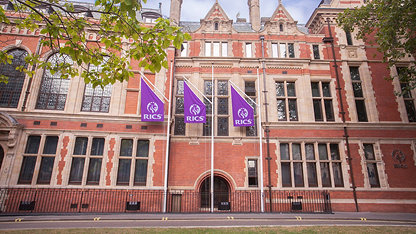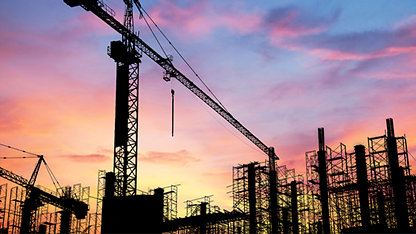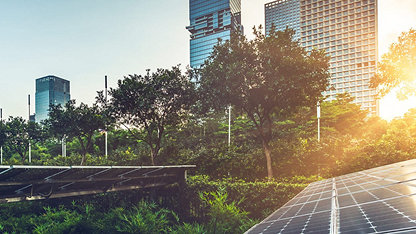Over the last twenty-five years I have watched green building move from a fringe topic to a mainstream one and had the opportunity to help shape many of the industry's tools including early work with LEED as well as the creation of the most stringent green building program in the world: The Living Building Challenge.
The Living Building Challenge (LBC) asks designers to build buildings that operate exclusively on renewable energy, capture and treat their own water, offset all of their embodied carbon, and a host of other requirements that go further than any building certification program on the planet. The Living Building Challenge has proven that it is possible to build truly sustainable buildings with available technology and for reasonable budgets. Since launching this program in early 2006 there have been several hundred such buildings built or underway around the world, joining the tens of thousands of facilities pursuing LEED, BREAM, GreenStar and other programs that are attempting to reduce their impact on the world. The building industry has made a shift, yet green buildings still do not account for the majority of buildings built in the world, most of which still consume significantly more resources than necessary and contribute to global warming emissions and climate change.
The results are in.
Despite the efforts of numerous green building champions and incredible leadership world-wide, we have clearly failed as an industry to make the type and scale of change needed to ensure a safe, climate-stable future.
The 2018 IPCC report on climate change showed that in 2018, global emissions increased by 2.7%, following a 1.6% increase in 2017. The report found that major cuts to our CO2 emissions will only delay an inevitable increase of 1.5 degrees. It enumerates the consequences of this 1.5 degree increase and compares an increase in global temperatures of 1.5 and 2 degrees; both outcomes predict stronger storms, more erratic weather, rising sea levels, and dangerous heat waves, with the 2 degree increase exponentially more disruptive than the 1.5 degree increase. Meanwhile, emissions keep increasing, adding up to catastrophic impacts to the global economy.
Turning the tide will prove no small feat, requiring we entirely replace all fossil fuel infrastructure with renewable, non-polluting energy sources, while simultaneously engineering a way to drawdown carbon from the atmosphere.
The building sector now knows how to do this effectively and compellingly and yet one of the reasons we aren't doing more of it is because we don't know how to properly value and recognize the sizeable benefits of Living Buildings - let alone typical green buildings - and align policy and financing appropriately. We perversely incentivise the wrong things and punish the kind of innovations required.
“The strongest growth in demand will be for technological skills… by 2030 [they] will represent 17% of hours worked, up from 11% in 2016. ”
Skill Shift: Automation and the Future of the Workforce, 2018
McKinsey Global Institute
Perhaps Chartered Surveyors could do more?
The Bullitt Center: A Case Study
The Bullitt Center is the world's first commercial Living Building and is widely considered the greenest commercial office building in the world. The building uses a fraction of the energy that a typical office building does and the energy that it does use is entirely solar generated, even though the building is located in Seattle - the least sunny city in the United States.
The Bullitt Center's meticulously integrated components include a 14,000 SF solar panel array comprised of 575 individual panels that create 230,000 kilowatt hours per year, radiant heating using geo-thermal ground wells, heat recovery ventilation, triple pane operable windows and operable and automated shading devises, a water catchment, filtration, and re-infiltration system, composting toilets, and a building management system that integrates and coordinates all the building's mechanical functionality for optimal comfort of its occupants.
It will never have a water bill or energy bill.
When the building's owners sought financing for the project, lending institutions had no idea how to properly value the building. They looked for comparable buildings that did not exist and ended up penalising many of its atypical green features because they were unprecedented in Class A office construction. A low valuation meant that considerably more equity was required to build the building as intended - a fact that didn't deter this particular building owner but would have scared off nearly every other developer in the market (and typically does).
Upon completion, determining a value for this unprecedented building continued to prove difficult. Yet soon the data began to make its value clear. Not only was the building meeting expectations for energy efficiency, it was exceeding them, using only 1/5 of the energy buildings down the street used, with better air quality and thermal comfort, and generating more renewable energy than required thus accounting for both its own and in some cases the carbon emissions of other projects. This translated to annual operational savings of $147,803 with associated avoided emissions of 323.47 metric tons of CO2 and energy savings equalling 704,367 kWh/sf/year. The rainwater capture and re-infiltration is estimated to save the Seattle Public Utilities an estimated $9,665 annually in storm water management and treatment. Low flow technology and waterless composting toilets saves $7,400 in annual water costs.
The site development itself, which encourages pedestrian and public transit and discourages the use of private vehicles by not supplying any parking, avoids a carbon impact valued at $32,005 annually.
The fact these benefits were ignored (or rather, misunderstood) in the initial valuation of The Bullitt Center highlights the opportunity I'm driving toward. Currently, our models for attaching monetary value to buildings ultimately penalises green buildings while rewarding "normal," inefficient ones. No wonder green building uptake is not as fast as it should be. Notice that the various dollar amounts listed above aren't all directly attached to cost savings for the Bullitt Center, but rather, some represent a social cost of carbon (which was placed at $200/metric ton of carbon to arrive at the dollar amounts listed) or savings for public utilities. This highlights the fact that so many of the true costs of operating buildings are externalised to public utilities, the environment, and the tax-payer.
What remains unquantified is the health and wellness benefits to the building's occupants by way of using only safe, non-toxic materials, free of red list chemicals, and ensuring optimal air and light quality. These measures have proven to reduce sickness and absenteeism and increase productivity and retention — benefits that deserve due recognition in any discussion of the value of commercial real estate but never make it into valuation discussions.
While current financial analyses do not factor in these kinds of externalised or optional costs, and while there isn't yet a carbon tax in most markets, changes along these lines are likely in the near future and the value of the building increases even more dramatically in that light.
The proof of these elements is now clear; the building has been fully occupied since its first year of operations and is able to charge slightly higher rental rates than comparable buildings in the neighbourhood because of its superior environmental and occupant attributes. All of these factors combined with extremely low operating costs and zero utility costs means that it is one of the strongest (and possibly the overall strongest) financial performer of any building now in the City of Seattle – all for a structure that lenders felt was low in value to begin with because it was "different."
What can Chartered Surveyors do?
Chartered Surveyors need to properly value sustainability elements on a holistic basis rather than systematically undervaluing such elements in buildings. This requires new perspectives, new analysis, and new thinking. Future trends such as climate change and rising energy costs put inefficient assets at risk of being stranded or at extreme disadvantage, yet these trends are currently barely given lip service.
While the green building movement today has failed to create the scale of change needed to avoid climate change, what it has done is built thousands of case studies and examples that can now inform more massive adoption ahead, providing Chartered Surveyors with all the data and examples they need to change how they do their critical work in valuation.
Finally, Chartered Surveyors must become allies in the push for stronger codes and regulations, actively supporting green building initiatives. This is a way for the profession to lead and be proactive—at a critical and pivotal moment in history—rather than falling back on reactivity and "how things have always been done," while concurrently falling behind the times in now much more dangerous ways.
Jason McLennan is CEO of McLennan Design















